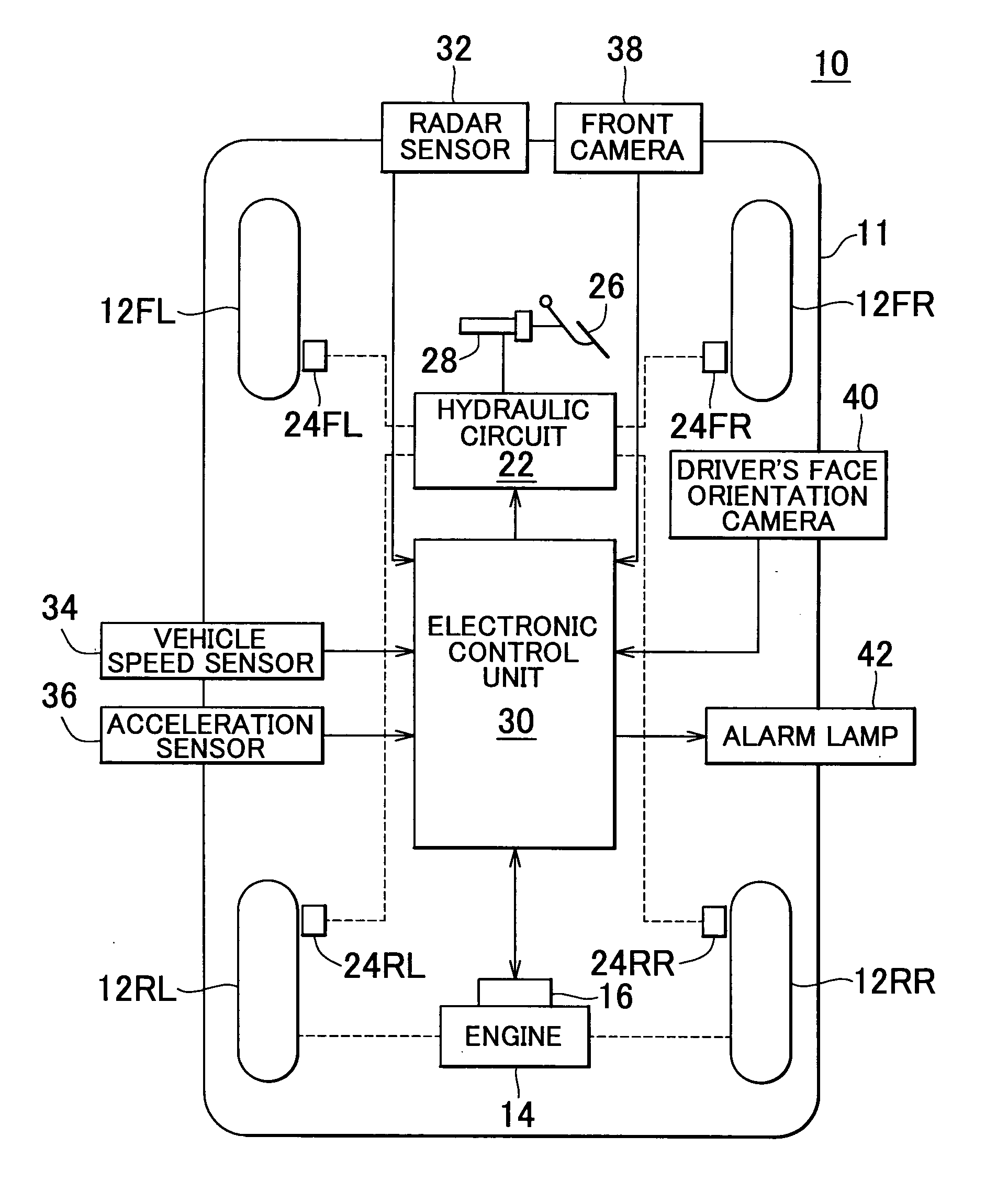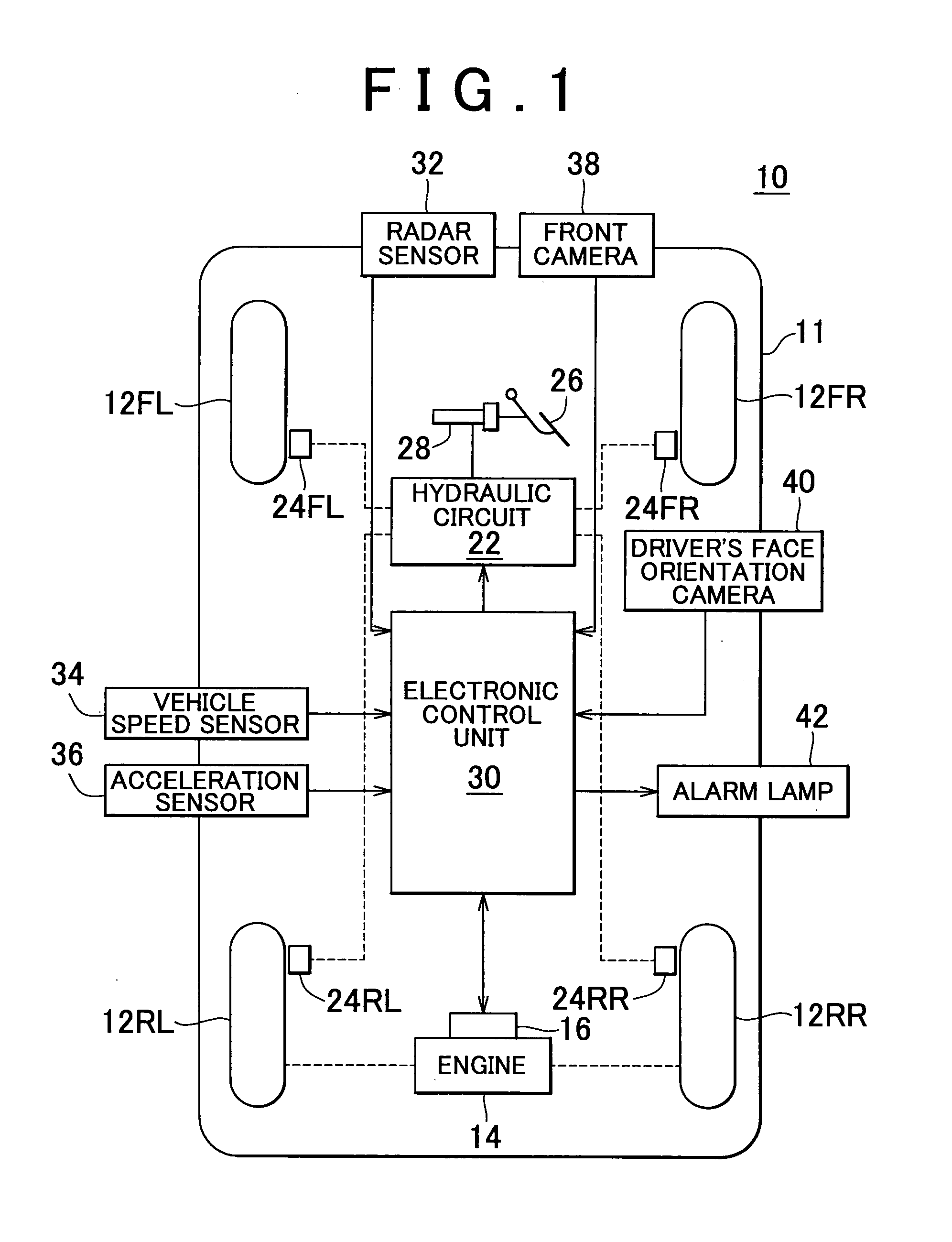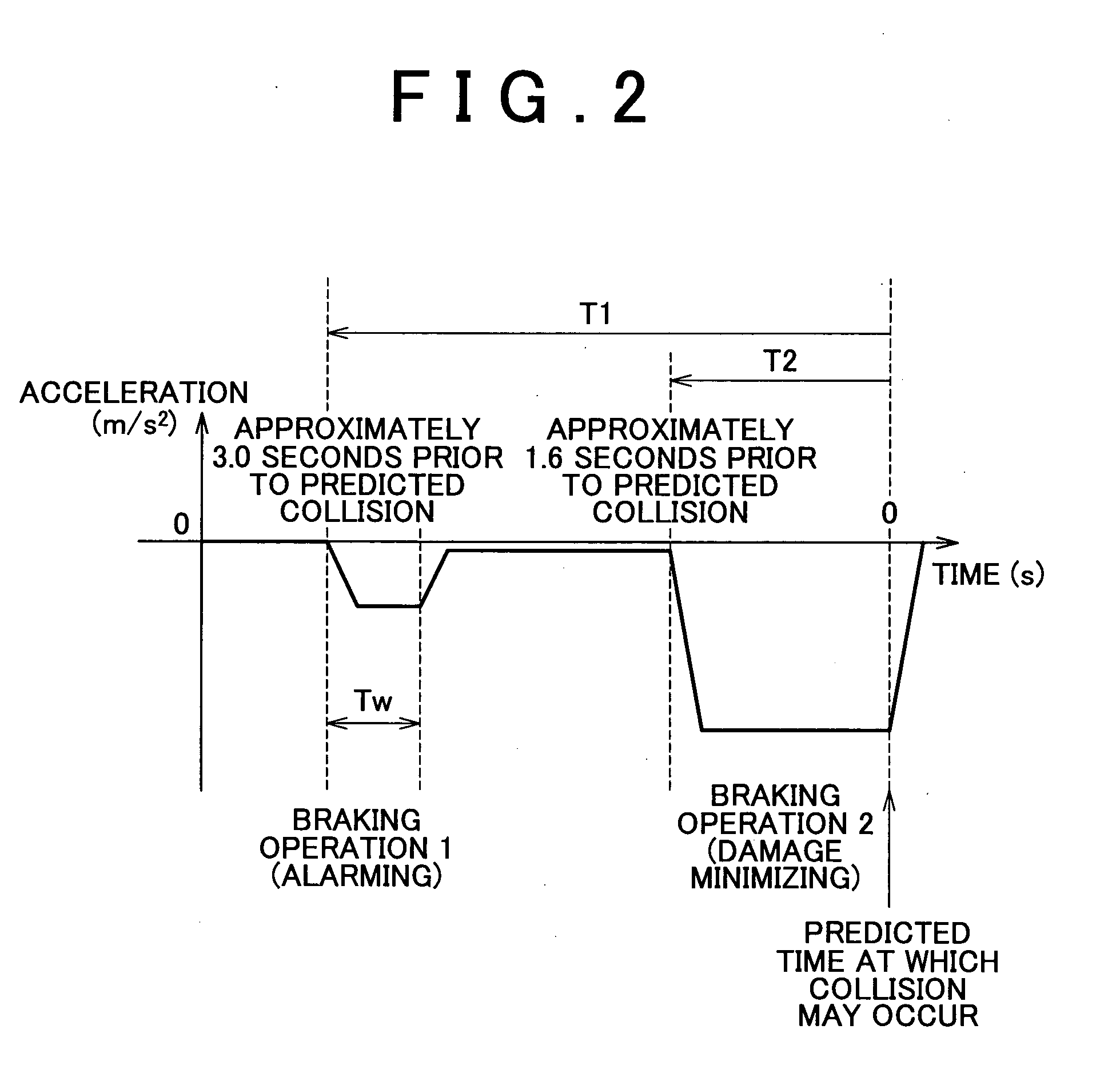[0009]Accordingly, even if the host vehicle is accelerating immediately before the alarming braking operation is started, it is possible to prevent an amount of change in the acceleration between before and after the alarming braking operation is started from being excessively large, because the target acceleration is set to an appropriate value based on the acceleration of the host vehicle immediately before the alarming braking operation is started. It is, therefore, possible to prevent an excessively large
impact from being given to the driver. In addition, even if the host vehicle is running at a
constant speed or decelerating immediately before the alarming braking operation is started, it is possible to prevent an amount of change in the acceleration between before and after the alarming braking operation is started from being excessively small because the target acceleration is set to an appropriate value based on the acceleration of the host vehicle immediately before the alarming braking operation is started. As a result, the driver reliably recognizes that the alarming braking operation is performed.
[0011]With the structure described above, the drive power is set to the value at which a negative acceleration is applied to the host vehicle (for example, the
engine braking state is realized) so that the target acceleration that is set based on the acceleration of the host vehicle, which is detected when the collision probability index value reaches the predetermined threshold value, is achieved. In addition, the braking force is set so that the target acceleration is achieved. When the drive power for accelerating the host vehicle is generated, it is not necessary to apply a braking force that overcomes the drive power. Accordingly, it is possible to prevent generation of an unnecessary drive power.
[0015]In such a case, if the amount of change in the acceleration of the host vehicle between before and after the alarming braking operation is started is uniform, the higher the acceleration of the host vehicle, which is detected immediately before the alarming braking operation is started, is, the larger the amount of decrease in the acceleration, which is caused by changing the drive power to the value at which the resistance to running of the host vehicle is generated, is. Accordingly, the higher the acceleration of the host vehicle, which is detected immediately before the alarming braking operation is started, is, the smaller the braking force required during the alarming braking operation is. Accordingly, the amount of change in the acceleration, which is caused when the braking force is made 0 when the alarming braking operation ends, becomes smaller, and the effect of giving an alarm to the driver using the
impact generated by the difference in the acceleration between before and after the alarming braking operation also becomes smaller.
[0018]If the acceleration of the host vehicle immediately before the alarming braking operation is started is sufficiently high, the impact given to the driver by the alarming braking operation is sufficiently large (namely, there is a sufficiently large difference between the acceleration achieved by setting the drive power for driving the vehicle to the value at which the resistance to running of the host vehicle is generated when the alarming braking operation is started and the acceleration immediately before the alarming braking operation is started). Accordingly, even if the acceleration does not change when the braking force is made 0 at the end of the alarming braking operation, a sufficient effect is produced. In such a case, if the target acceleration is set to a value lower than the acceleration achieved at the drive power for driving the vehicle, at which the resistance to running of the host vehicle is generated, an unnecessary braking force is generated for the alarming braking operation, and the driver may feel a sense of discomfort in the operation of the host vehicle. Accordingly, it is appropriate to set the target acceleration to the acceleration that is achieved at the drive power for driving the host vehicle, at which the resistance to running of the host vehicle is generated, as described above. Thus, it is possible to perform the appropriate alarming braking operation while preventing application of an unnecessary braking force.
[0021]Because the amount of change in the acceleration between before and after the alarming braking operation is started is uniform, the impact given to the driver is also uniform. As a result, it is possible to prevent the situation where the driver feels a sense of discomfort in the operation of the host vehicle because the amount of change in the acceleration is excessively large. It is also possible to prevent the situation where only a small effect is produced because the amount of change in the acceleration is excessively small.
 Login to View More
Login to View More  Login to View More
Login to View More 


